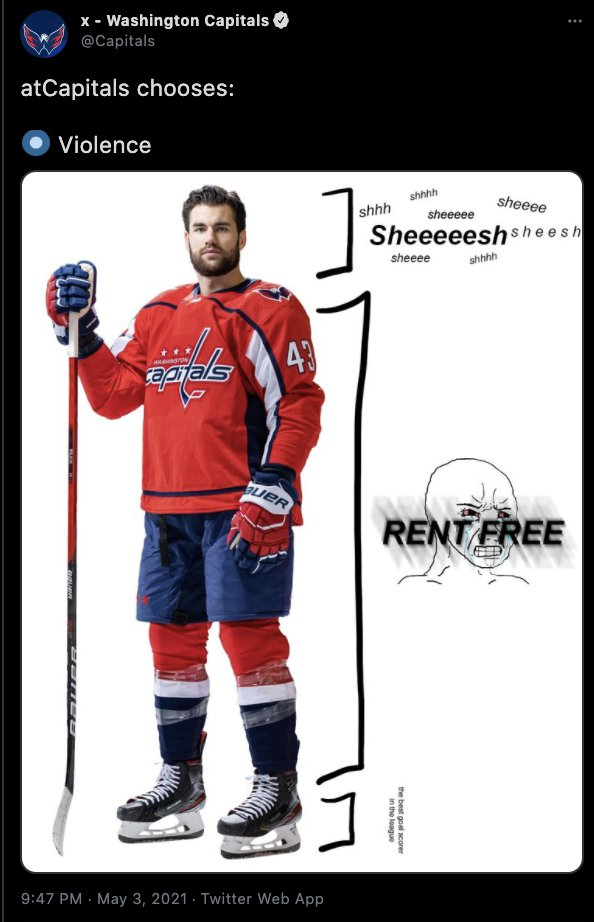
via your classmate Griffin:
“Fighting is a part of hockey; it belongs in the game!” Old and new school hockey fans have clashed over this sentiment for many years, with few NHL organizations actually taking a discernable stance on the matter. However, the Washington Capitals have recently faced criticism on their brand communications regarding the recent actions of the often-controversial Tom Wilson. Wilson drew the ire of hockey fans after pushing the face of opponent Pavel Buchnevich into the ice, followed by what could only be described as a body slam on Rangers star Artemi Panarin. While these actions obviously reflect on Wilson’s motives as a player, how does this relate to the brand of the Capitals?
Well, with the league recently facing accusations of negligence in protecting player safety, the social media manager of the Capitals decided to stir the pot a little bit (see screenshot above). Many fans were upset with the insensitive nature of the tweet, as Wilson’s actions sidelined Panarin for the remainder of the Rangers’ season. While Wilson did not face any disciplinary action further than a fine, the team later deleted the tweet, noting that it “didn’t meet the team’s social media standards”. Going forward, the Capitals may want to consider re-evaluating their social media response strategy, possibly requiring more oversight when posting. Backlash similar to what was observed reflects negatively on the brand the actions that caused it were unnecessary and somewhat callous. Interestingly enough, the Rangers went on to release a statement in which they questioned the fitness of the league for maintaining player safety; they were subsequently fined $250,000 for their actions. Go figure.
To learn more, check out these articles:



